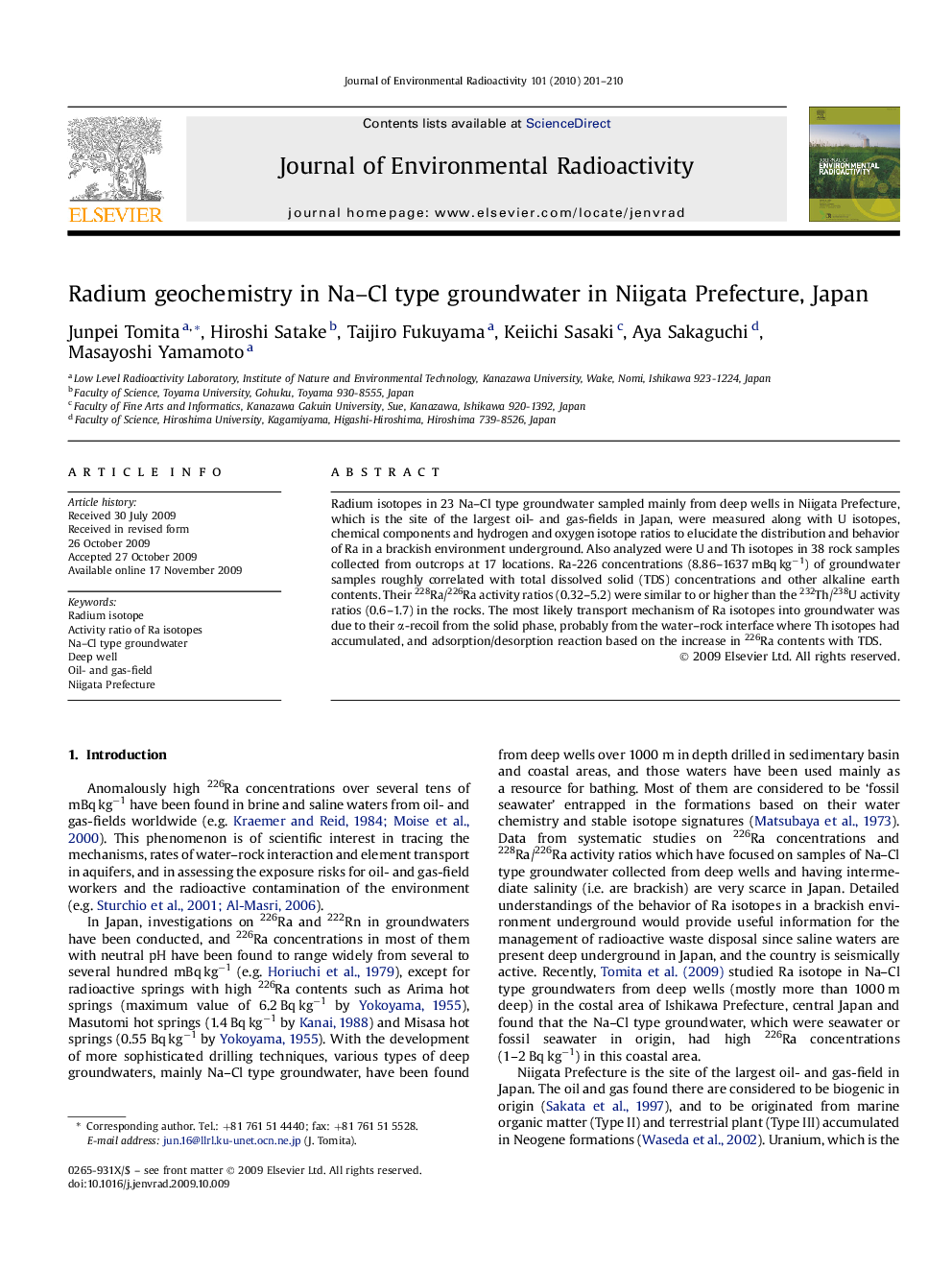| Article ID | Journal | Published Year | Pages | File Type |
|---|---|---|---|---|
| 1738527 | Journal of Environmental Radioactivity | 2010 | 10 Pages |
Radium isotopes in 23 Na–Cl type groundwater sampled mainly from deep wells in Niigata Prefecture, which is the site of the largest oil- and gas-fields in Japan, were measured along with U isotopes, chemical components and hydrogen and oxygen isotope ratios to elucidate the distribution and behavior of Ra in a brackish environment underground. Also analyzed were U and Th isotopes in 38 rock samples collected from outcrops at 17 locations. Ra-226 concentrations (8.86–1637 mBq kg−1) of groundwater samples roughly correlated with total dissolved solid (TDS) concentrations and other alkaline earth contents. Their 228Ra/226Ra activity ratios (0.32–5.2) were similar to or higher than the 232Th/238U activity ratios (0.6–1.7) in the rocks. The most likely transport mechanism of Ra isotopes into groundwater was due to their α-recoil from the solid phase, probably from the water–rock interface where Th isotopes had accumulated, and adsorption/desorption reaction based on the increase in 226Ra contents with TDS.
